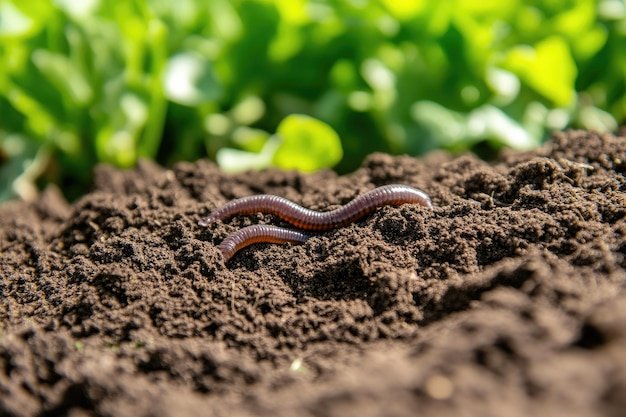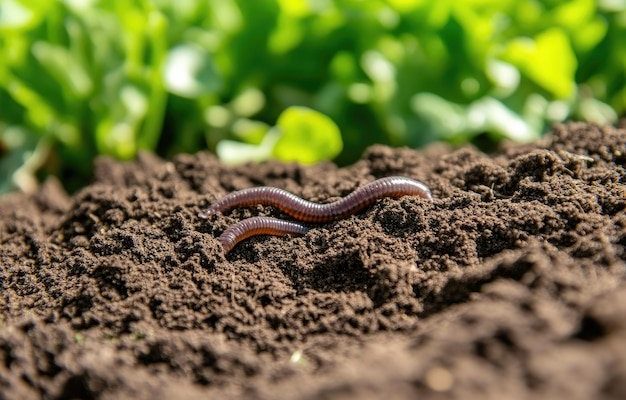
So, what exactly is a soil log? It’s essentially a record you keep to track earthworm activity over time. With tools like the **Earthworm Monitoring System**, which often comes with a remote for easy data syncing, you can make the process even more efficient. Let’s dig deeper (pun intended!) and explore how to monitor earthworm activity, why it matters, and how soil logs can serve as a valuable resource.
Why Monitor Earthworm Activity?
You might be wondering: why should I care about earthworms? Here’s the thing—earthworms play a vital role in maintaining soil health. They help decompose organic materials, improve soil structure, and enhance nutrient cycling. Basically, they’re like nature’s recyclers! But when their numbers start to dwindle, it can signal underlying problems in your soil health. Monitoring their activity gives you insights into whether your soil is thriving or struggling.
Additionally, understanding earthworm activity can inform your gardening or farming practices. If you notice a decline in earthworm activity, it might be time to reassess your soil management techniques, such as how often you’re watering or what fertilizers you’re using. It’s like getting a report card on your soil’s health!
Setting Up Your Soil Log
Starting a soil log might sound daunting, but it’s pretty straightforward. Here’s how you can get started:
1. **Choose a Location**: Pick a spot in your garden or field where you want to monitor earthworm activity. Ideally, choose a site that represents the entire area you’re interested in.
2. **Gather Materials**: You’ll need a notebook or a digital app to record your observations. A simple spreadsheet can work wonders for keeping everything organized.
3. **Decide on a Schedule**: Regular monitoring is key. Consider checking in weekly or bi-weekly to note changes over time. Consistency will help you see patterns in earthworm activity.
Now, when you’re actually observing, keep an eye out for various types of earthworm casts—these little piles of soil are a sure sign that earthworms are working hard beneath the surface.
Using a Remote Monitoring System
If you want to step it up a notch, consider using a **remote monitoring system**. These systems allow you to sync data effortlessly and keep track of your findings without the hassle of pen and paper. Look for options that have user-friendly interfaces and reliable battery life. The data collected can help you identify trends in earthworm populations and can even help in troubleshooting any issues you may face in your garden or field.
Understanding Earthworm Behavior
Earthworms are fascinating creatures with distinct behaviors based on environmental conditions. Here are a few points to consider:
– **Moisture Levels**: Earthworms thrive in moist conditions. If it’s particularly dry, you might notice fewer worms. Conversely, right after a rain, they’ll be more active, coming to the surface as they seek out oxygen.
– **Temperature**: They prefer cooler temperatures, typically between 50°F and 70°F. Extreme heat can drive them deeper into the soil to escape the warmth. Your soil log should reflect these fluctuations in activity based on the season.
– **Soil Type**: Different types of soil host different earthworm species. For instance, sandy soils may support fewer earthworms than rich, loamy soils. Make sure to note any changes in soil texture, as they can impact earthworm populations.
By observing these behaviors, you can gain deeper insights into their activity levels and what might be affecting them.
What to Record in Your Soil Log
When you’re monitoring earthworm activity, certain details can make a big difference in your findings. Consider logging:
– **Date and Time**: Always note when you made your observations. This helps track seasonal changes over time.
– **Environmental Conditions**: Include weather details, such as moisture levels and temperature. If you observe anything significant, like a rainstorm or a hot spell, make a note of that too.
– **Earthworm Counts**: Record the number of worms you find during each visit. This will help you spot trends over time.
– **Soil Health Observations**: Note any changes in soil texture or color, and look for visible signs of soil health, like the presence of other beneficial organisms.
The more detailed your log, the better your understanding of earthworm activity will be.
Comparing Different Monitoring Methods
There are other ways to monitor earthworms, but soil logs are one of the most accessible methods. You could use traps or specialized tools, but these often require more setup and maintenance. By keeping a soil log, you can easily keep track of activities without needing any complex equipment.
For instance, a simple pitfall trap can be effective but requires you to handle additional materials. If you’re looking for a low-effort option, your soil log is a solid choice.
Why Soil Logs Matter for Gardening and Farming
Keeping track of earthworm activity through soil logs isn’t just for scientists or researchers. It’s incredibly beneficial for gardeners and farmers. Monitoring helps you make informed decisions about fertilization, watering, and soil amendments. A healthy population of earthworms means your soil is likely working as it should.
Moreover, these logs can provide you with a history of soil health over time. If you notice a decline in earthworm numbers, it might prompt you to adjust your practices, such as reducing chemical usage or increasing organic matter in your soil.
Improving Soil Health Based on Your Logs
Once you’ve gathered enough data, you can start to make changes to improve soil health:
– **Add Organic Matter**: If your logs show low earthworm activity, consider adding compost or mulch. Earthworms love organic material, and this could boost their population.
– **Adjust Watering Practices**: Ensure that your soil isn’t too dry or waterlogged. Finding the right balance is key to encouraging earthworm activity.
– **Rotate Crops**: This helps keep the soil diverse and healthy, which in turn supports earthworm populations.
Monitoring earthworm activity with soil logs can be a fun and educational process!
Final Thoughts on Earthworm Monitoring
In the end, watching earthworm activity through soil logs is a rewarding way to connect with nature and improve your gardening or farming practices. It requires a bit of time and commitment, but the insights you gain will help you understand your soil health better.
With simple practices like keeping a soil log, regularly monitoring earthworm activity can lead to healthier soil, better plants, and a thriving ecosystem. So grab your notebook, find a good spot, and start digging into the wonders of your soil! The little earthworms will thank you.

